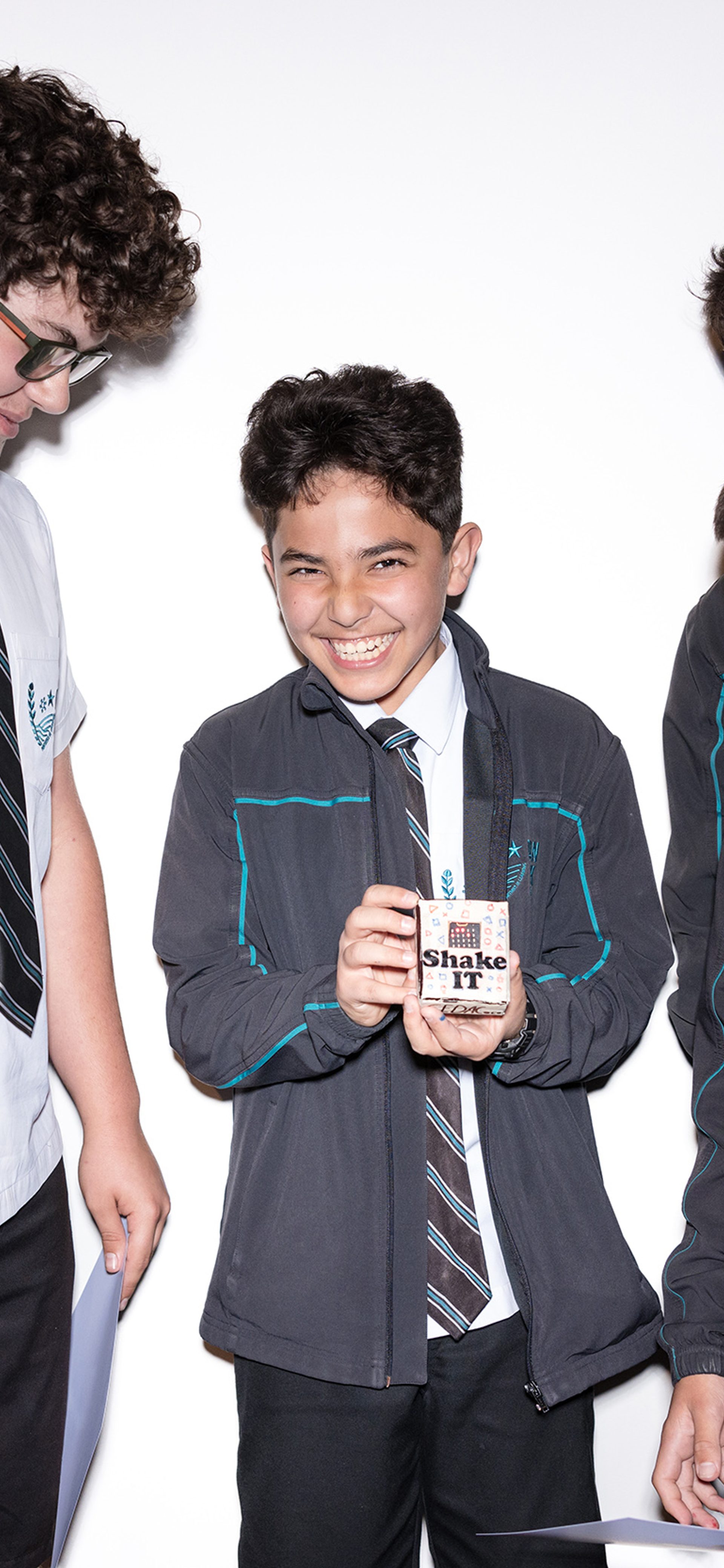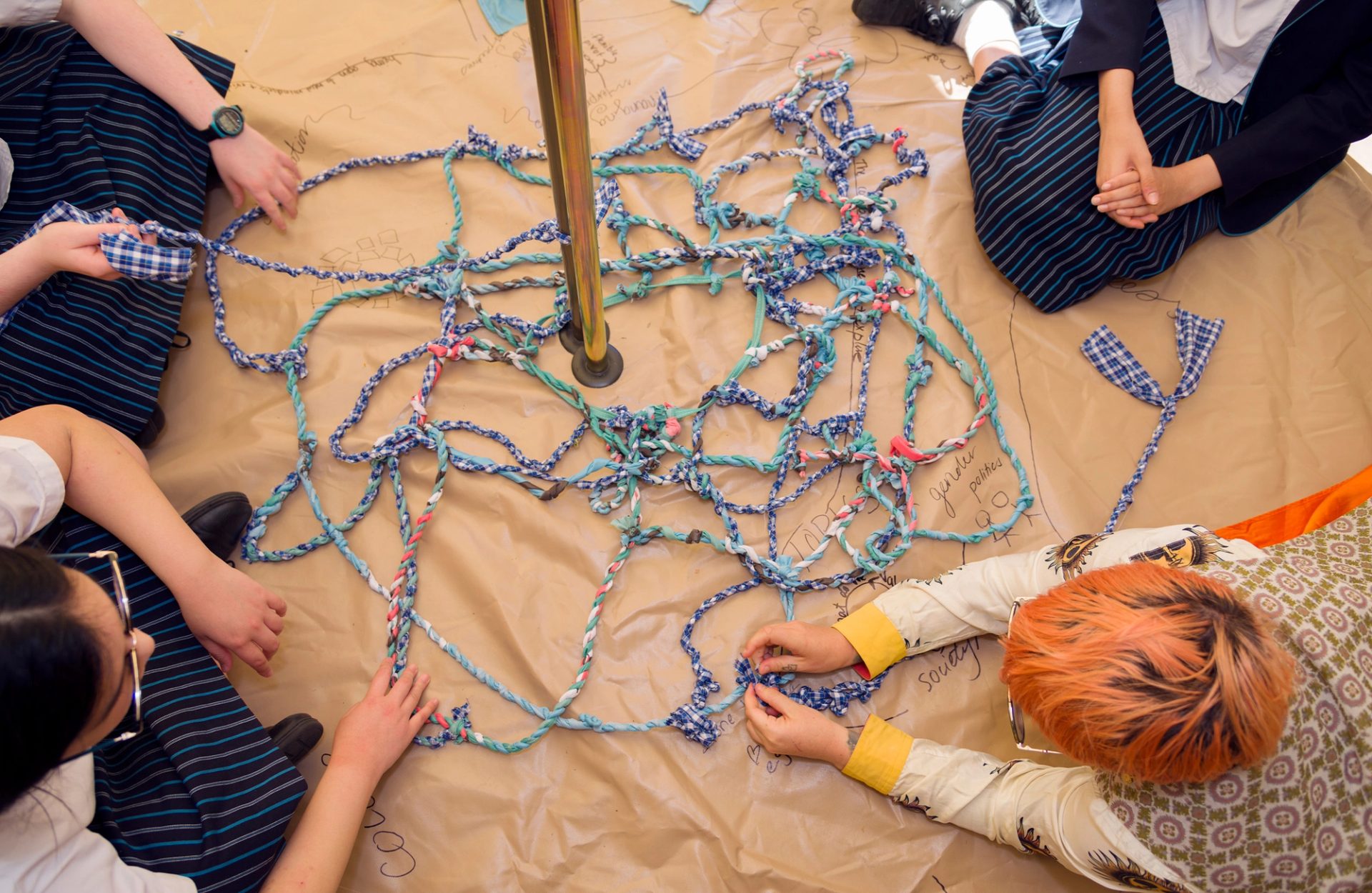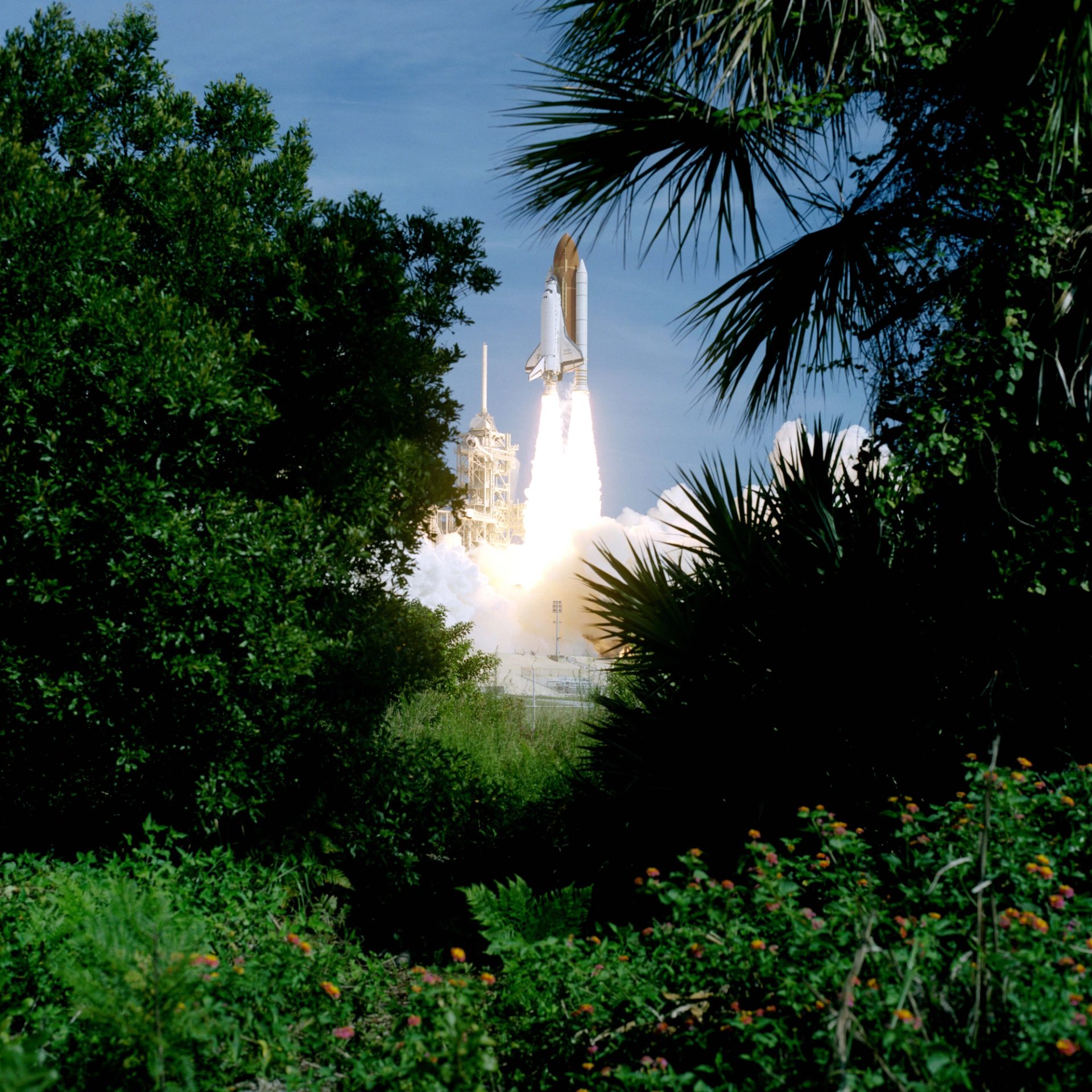Full STEAM Ahead 2023

‘STEAM related jobs have always interested me, and this program made me more interested.’
Full STEAM Ahead is an annual program aimed at inspiring and encouraging young people in years 5–8 to pursue studies and future career ambitions across Science, Technology, Engineering, Arts and Mathematics (STEAM). This 3-week learning and engagement program is a partnership project with the Australian Business Community Network (ABCN), produced by Powerhouse Learning. It is made possible through the generous donation and support of the Commonwealth Bank of Australia.
In week one of the program the young participants meet their Commonwealth Bank mentors who share personal experiences of STEAM career pathways. Together they explore concepts and processes of design thinking through a series of collaborative exercises.

‘The most useful thing I learnt was coding as it helped develop my skills so I now know the future I can build with careers in coding.’
During the second week Powerhouse educators lead a series of coding workshops, building participants’ skills in computational thinking, problem-solving and physical computing.
The program culminates with the young people drawing on the STEAM skills, knowledge and confidence developed throughout the program to work together in teams responding to a self-directed design challenge. Teams work together to identify real-world problems, designing and developing prototype solutions using a pocket-size BBC micro:bit computer and external components such as motors, arcade buttons and LEDs.
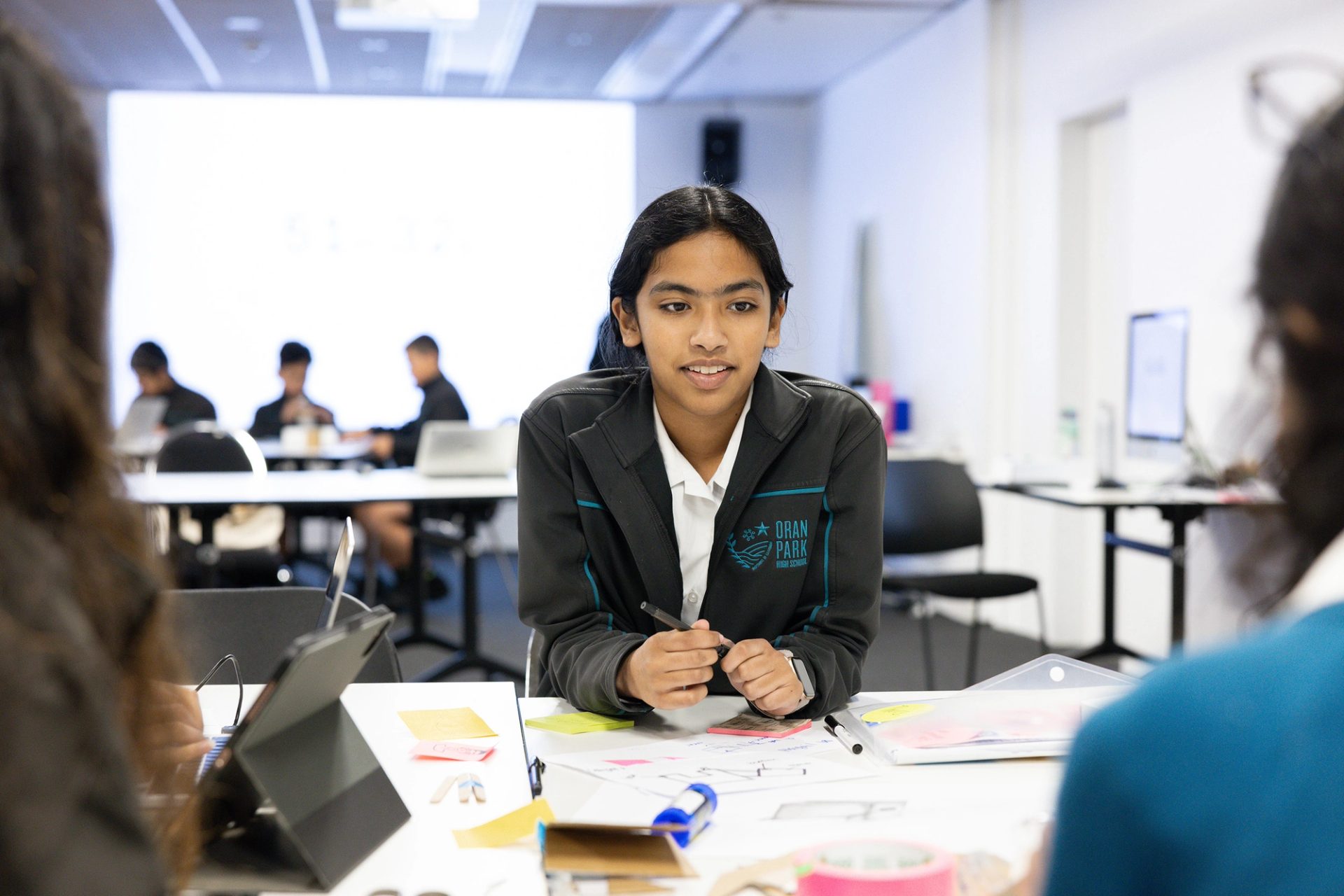
‘It was great to be part of an initiative which had tangible outcomes in building awareness of STEAM skills and roles with kids – so important for future employability and talent pipelines. It was amazing to see how quickly the kids grasped the new skills and how much they appreciated the experience.’
In 2023 the program reached 160 young people from schools across South Western Sydney, including Bankstown Girls’ High School, John Edmundson High School, Kingswood High School, Merrylands High School, Oran Park High School, Plumpton High School, Barramurra Public School and Greenway Park Public School.

2023 Projects
The following projects were coded and constructed in under two hours, demonstrating the young people’s strong collaboration, innovation, creativity and problem-solving skills.
Greenway Park Public School
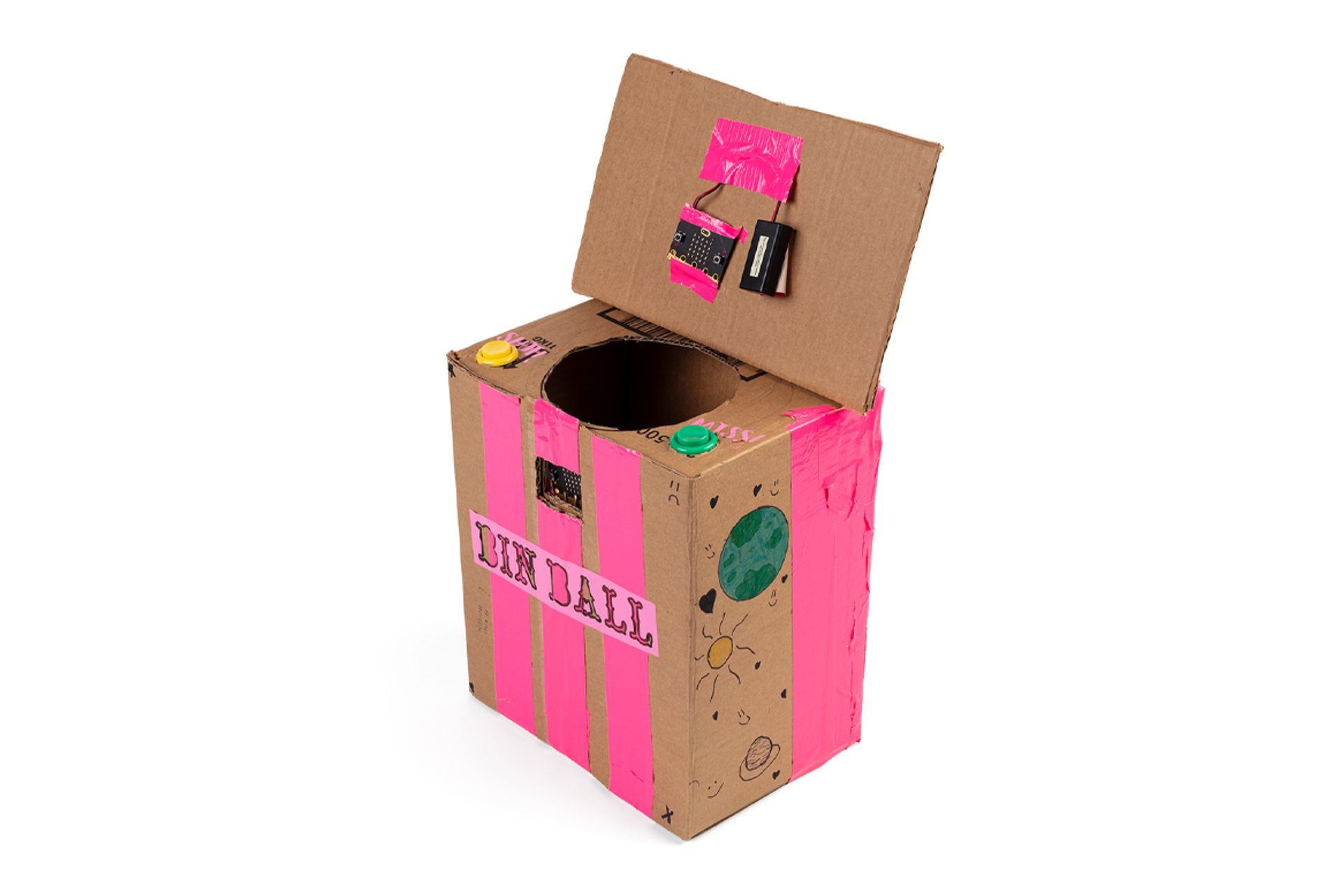
Bin Ball
How might we reduce the amount of litter around our school? Our project is a bin that will encourage students to throw their rubbish away by playing a fun game. Using the micro:bit’s tilt sensor to sense when the bin lid is opened, the micro:bit attached to the lid plays a song with the word ‘SHOOT!’ scrolling across the LEDs. If users throw the rubbish in the bin, they press either the ‘SCORE’ or ‘MISS’ buttons which activate either a happy face or sad face on the micro:bit on the front of the bin.
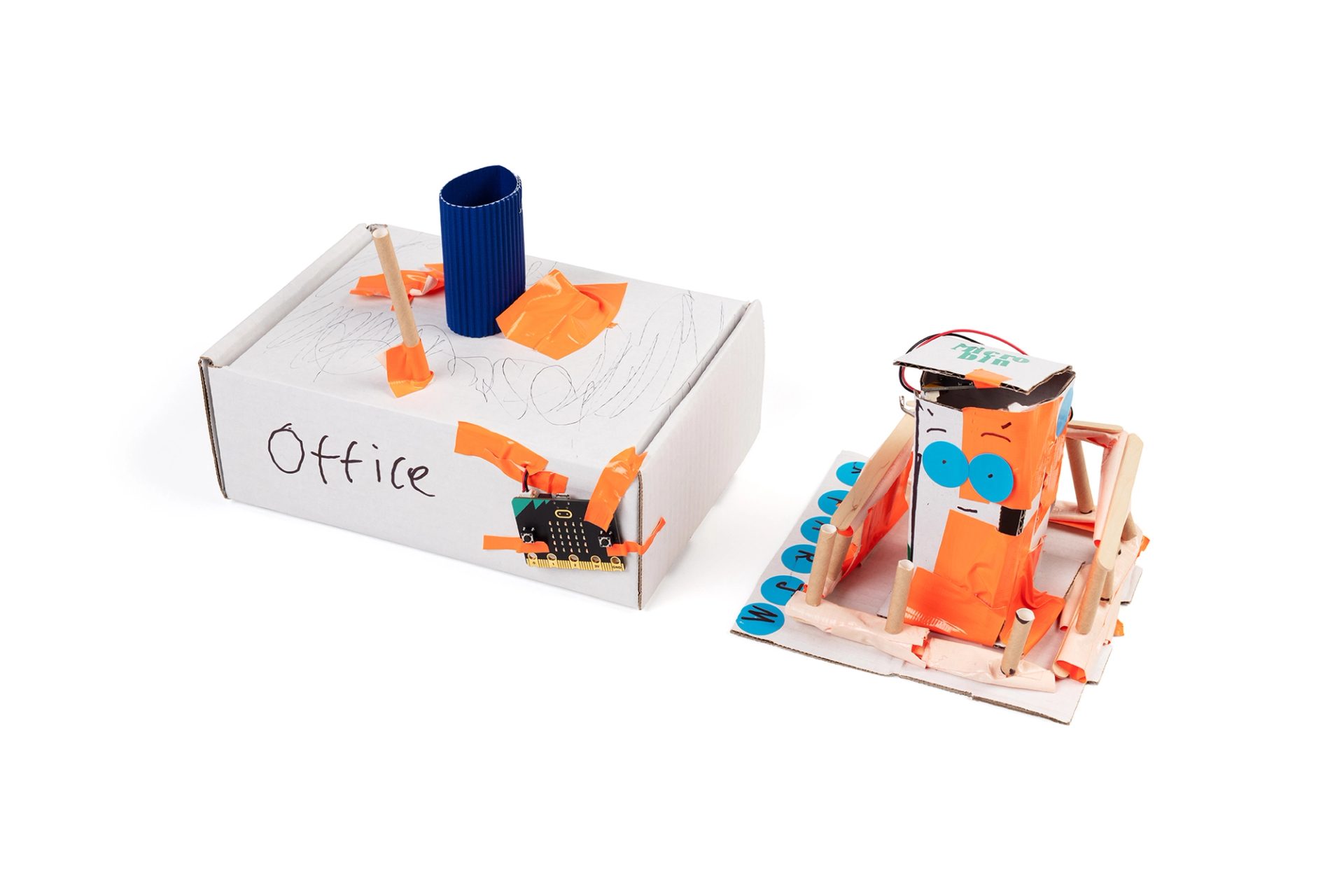
MicroBin
How might we preserve our environment even better? This prototype makes a simple task fun: every time the micro:bit under the bin lid faces up it’ll add 1 point and when the points get up to 50, it will send a signal to the office that the rubbish needs to be emptied.

Jerry
How might we improve the library to give people the best experience? Our project is a book wardrobe that supplies a book for your enjoyment. Press the button to activate a motor which opens the door.
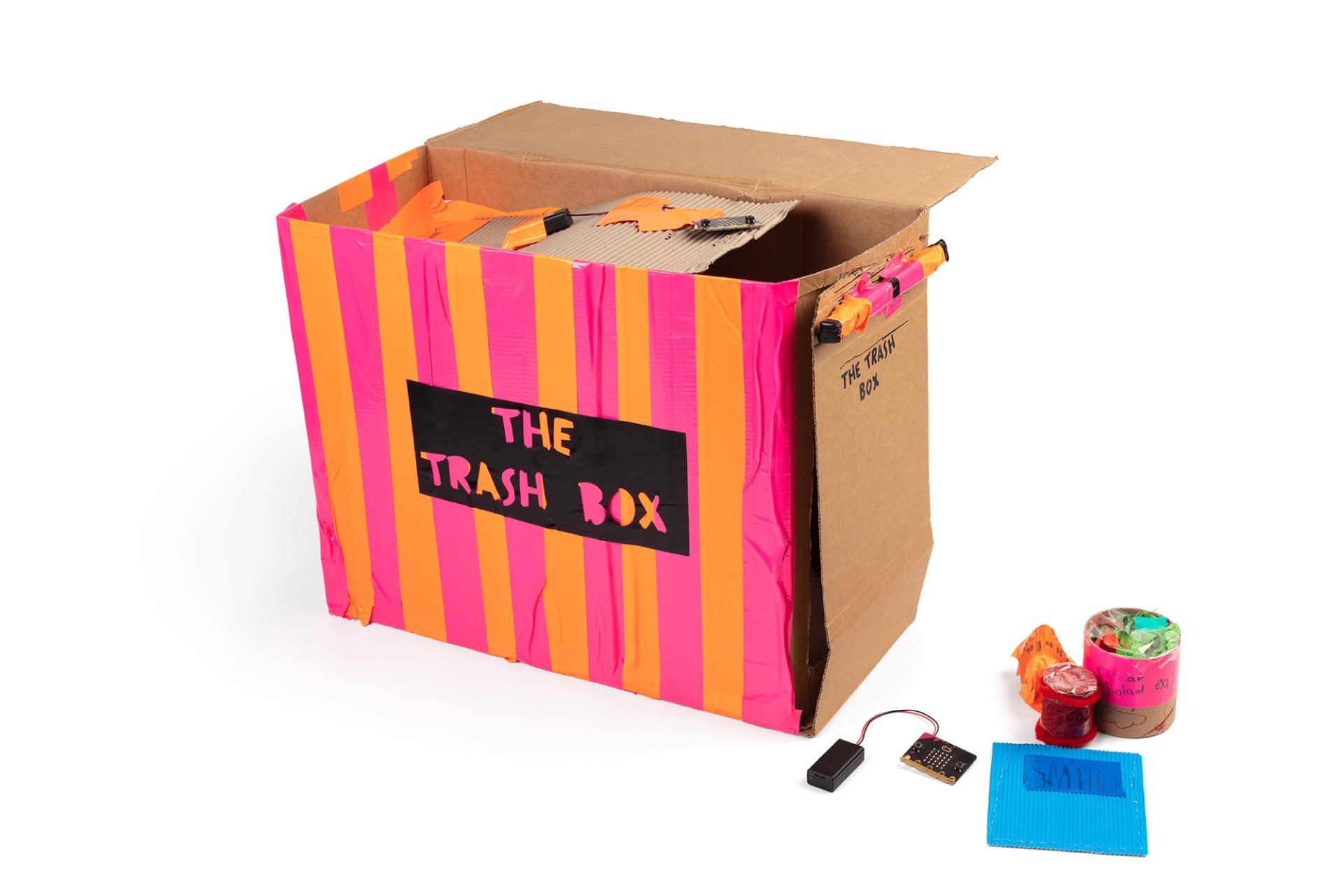
The Trash Box
How might we reduce the amount of littering happening around our school ground? We programmed two micro:bits so they can transmit to each other. Once micro:bit #1 tilts over five times on the flap inside the bin, it will send a message to micro:bit #2 and it will flash with the message and play music which tells us to change the bin.
Oran Park High School
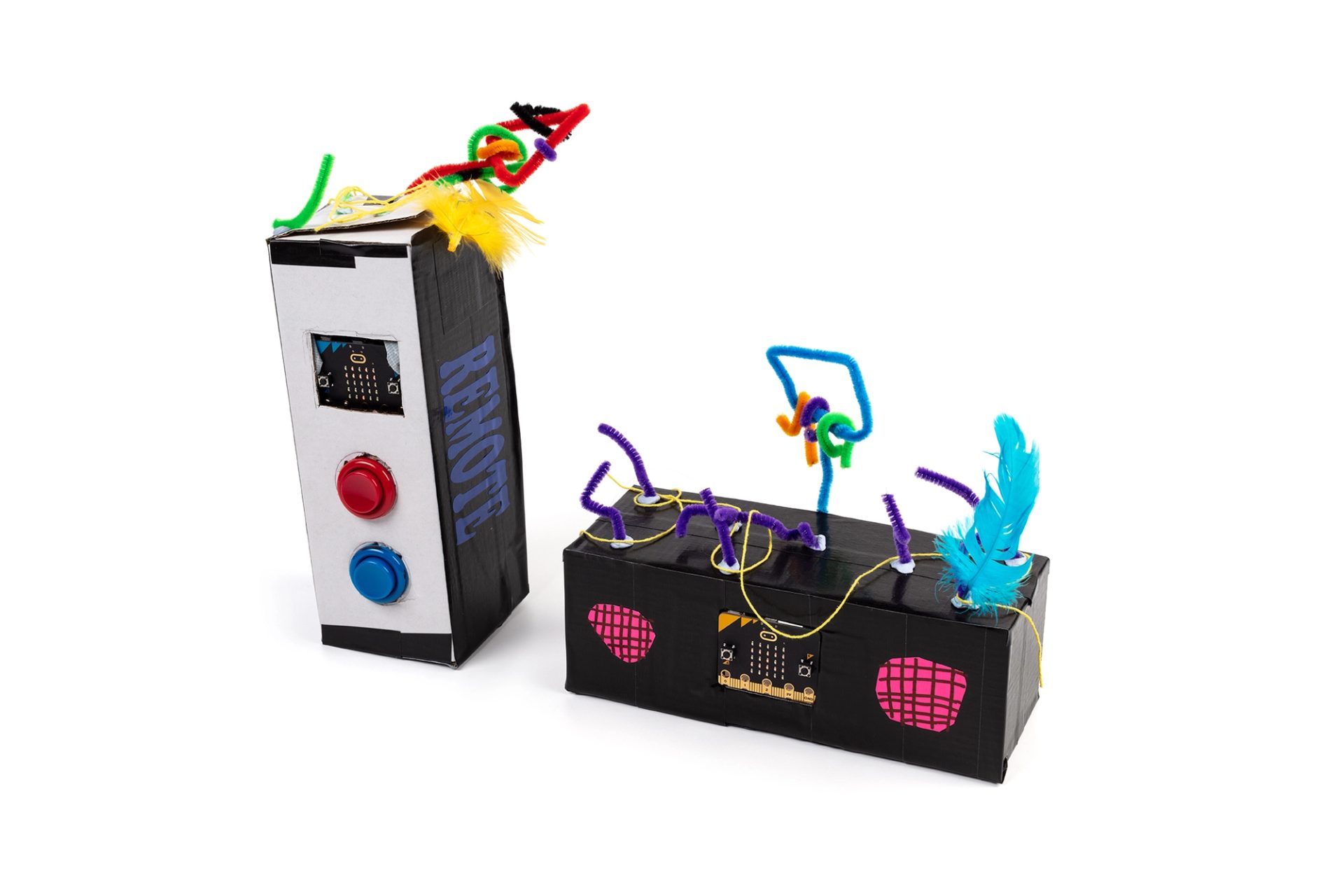
Classroom Focus
How might we help children focus in class? Our project is a remote and a speaker. The teacher presses the blue button which sends a signal to the speaker and it plays music. This reminds the children to focus and lower their volume.
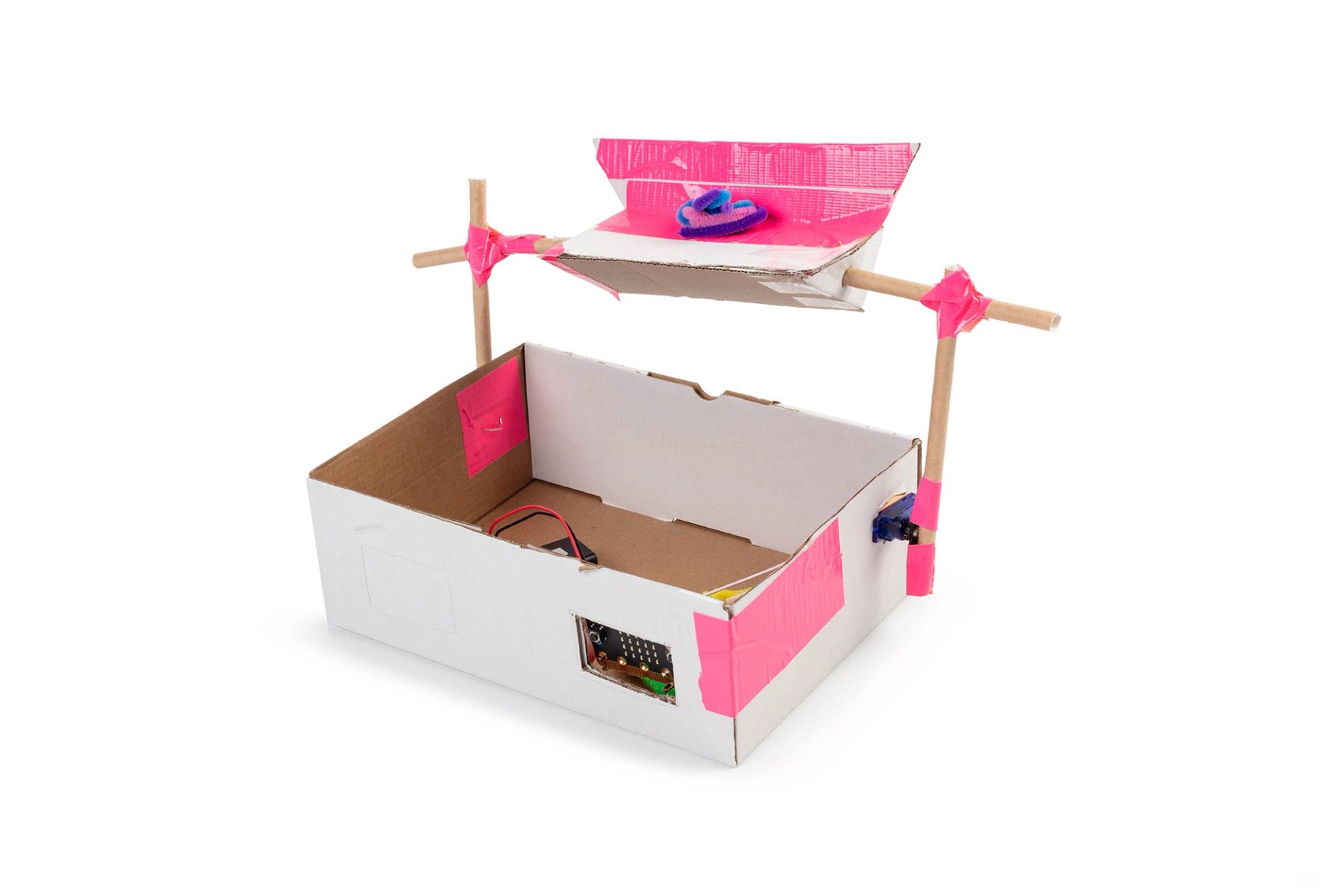
The Lemon’s Rubbish Scoop
How might we fix the pollution problem in our school and community? This is a rubbish bin which makes throwing your garbage in the bin more fun! The motor rotates to lift the scoop and place the rubbish in the bin.
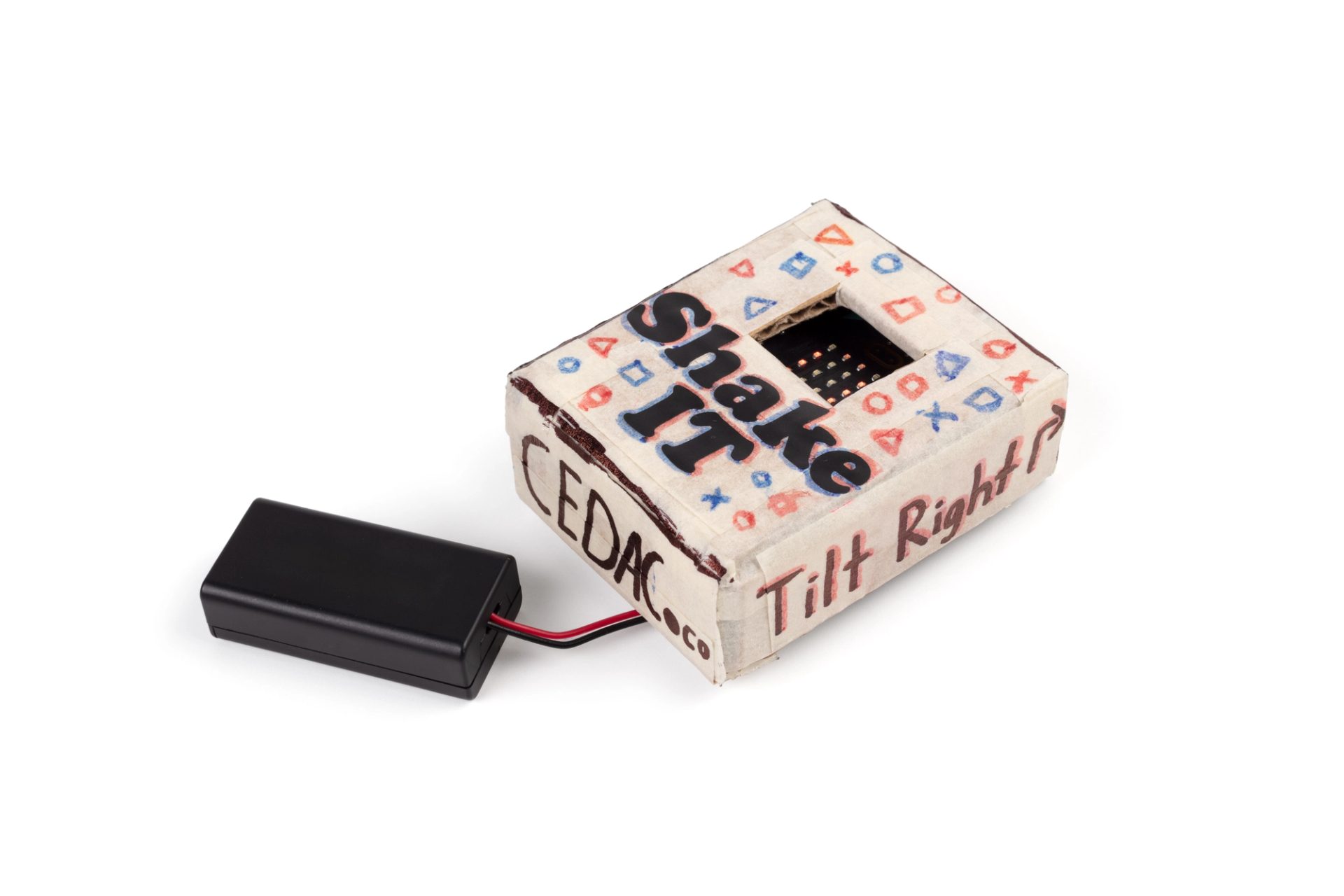
Shake It
How might we make our town more fun? A symbol shows up on the screen and when the user makes the corresponding action, their score increases. After a few rounds, the time between each symbol and the time to make the action decreases. If you don’t make the action in time, you lose.

Tug of War
How might we beat boredom on long road trips? Players press the buttons which move the LED on the microb:bit either left or right. Once the LED reaches the edge of either side, that player wins and a winning message scrolls across the micro:bit LEDs.
Barramurra Public School
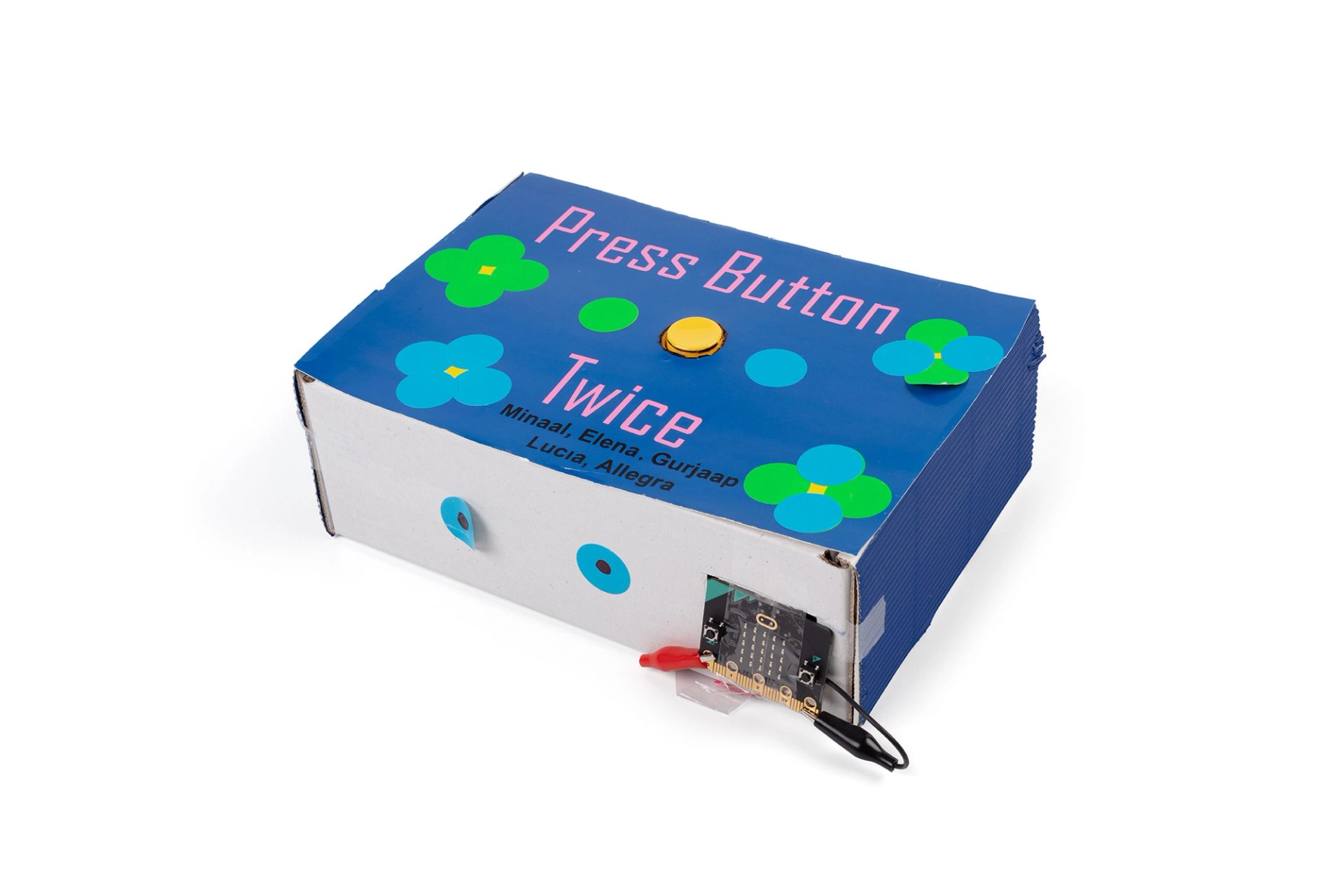
Canteen Ken
How might we make canteen ordering more efficient? Our team was annoyed of how canteen lines take up too much time. Canteen Ken is a canteen ordering system which if you press the button it displays your order number, so then you don’t have to line up. Instead you can roam around and wait for the canteen to call out your order number.

Picker-Upper
How might we reduce the rubbish in the classroom? We invented the Picker-Upper as a solution for all classrooms. A teacher presses the button which sends a signal to make lights flash and an annoying sound play. Students need to pick up the rubbish for the teacher to turn it off.
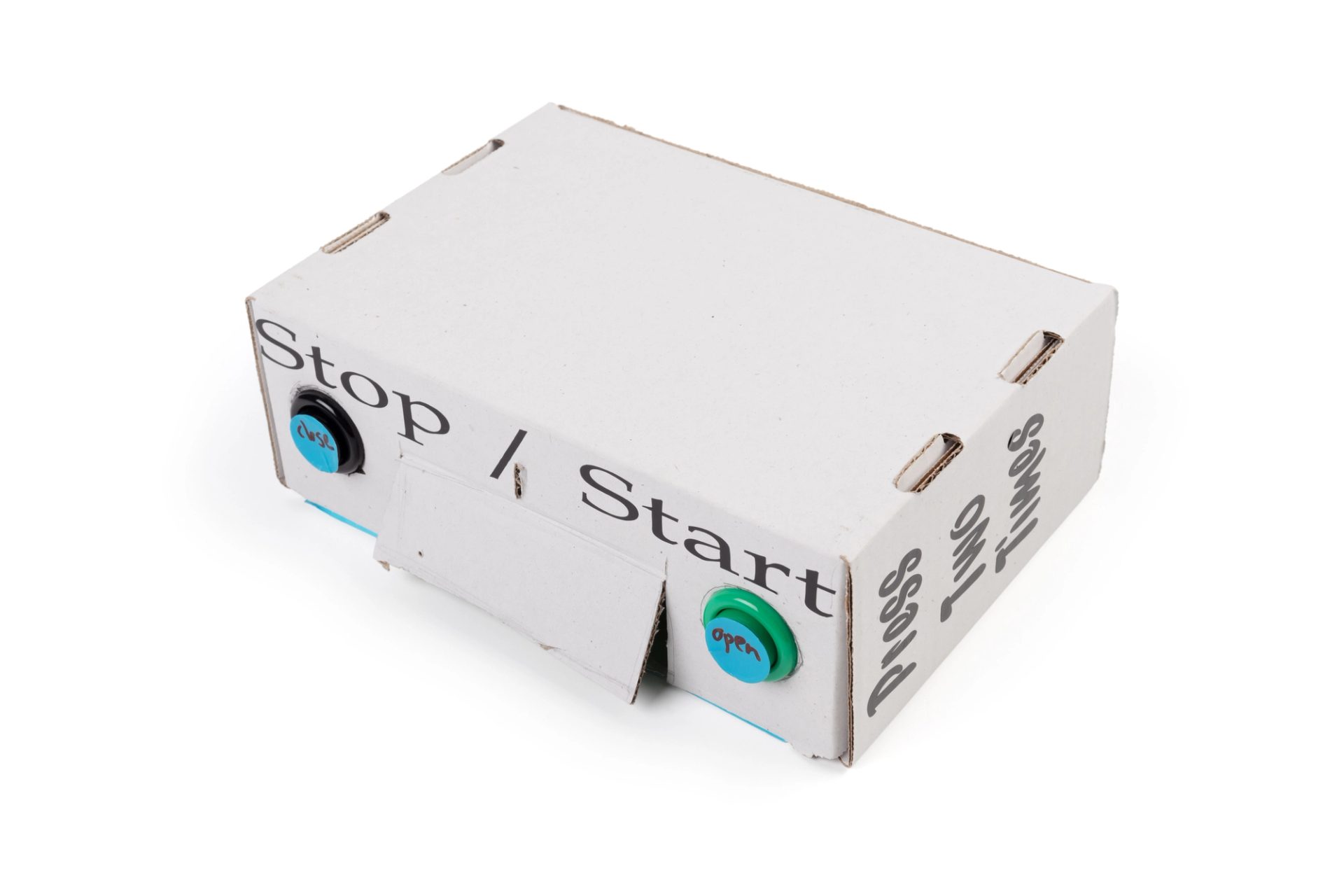
Start/Stop Bin
Tap the Start button to place your rubbish in the bin and the motor lifts the flap. Press the Stop button to close the bin.

Steamers Trolley Return
How might we solve the trolley return problem? Click the button when you are done and if the trolley senses it is not in the correct place it will beep.
Bankstown Girls High School

Bin It To Win It
How might we prevent littering in our school? When one of the house buttons is pushed the motor rotates to lift the lid of the bin and the house that was selected will gain a point. The house with the most points wins an excursion.
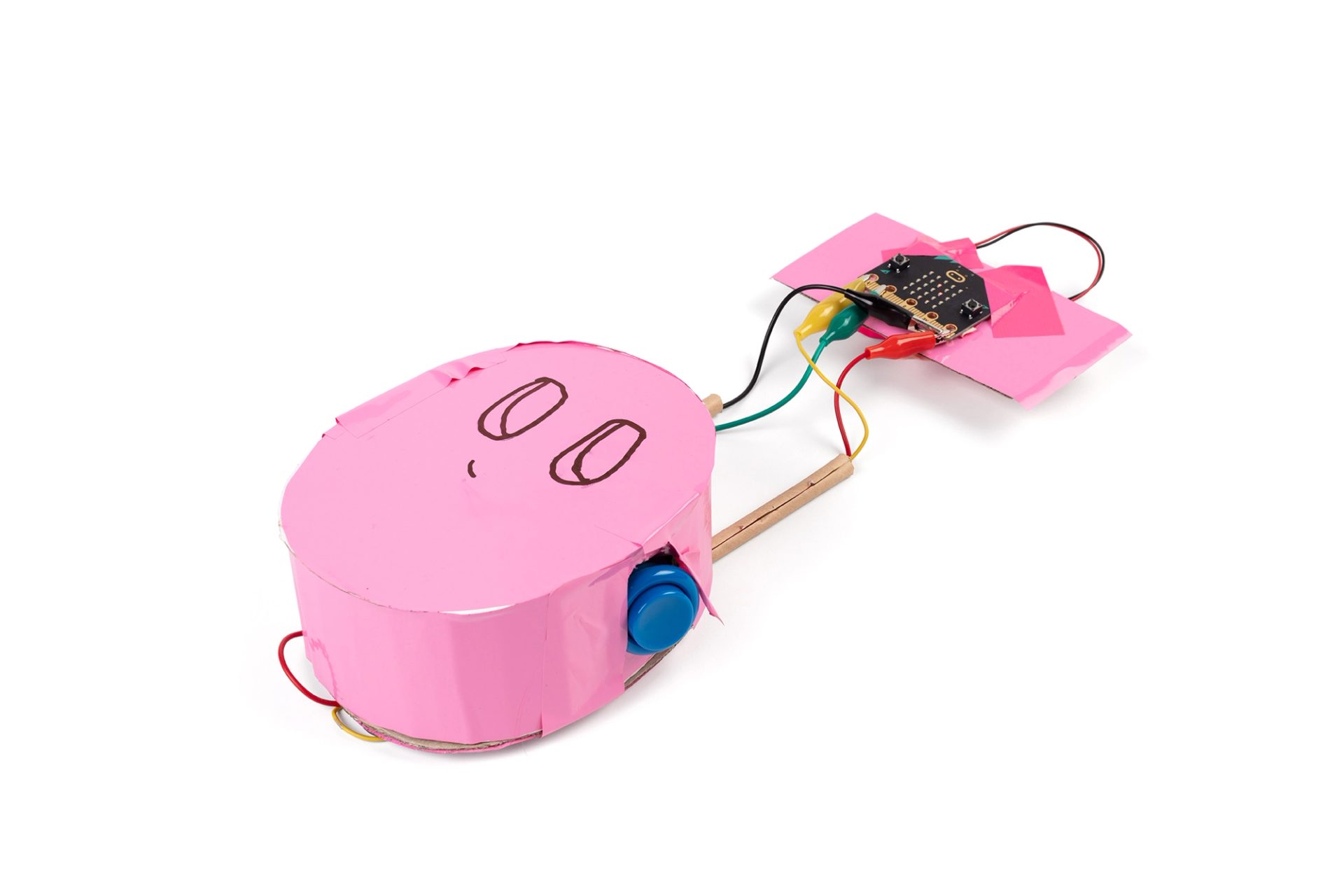
Kibby Qs
How might we improve learning without making it boring, but entertaining? The micro:bit displays true and false questions and students answer them by pressing the arcade buttons. After every question their score is shown, and the goal is to get as many answers correct as possible.

The Mimi Lock
How might we improve locks and prevent break-ins? The micro:bit attached to the lock receives a message when the button controls are pressed. The motor then rotates, locking or unlocking the Mimi Lock.
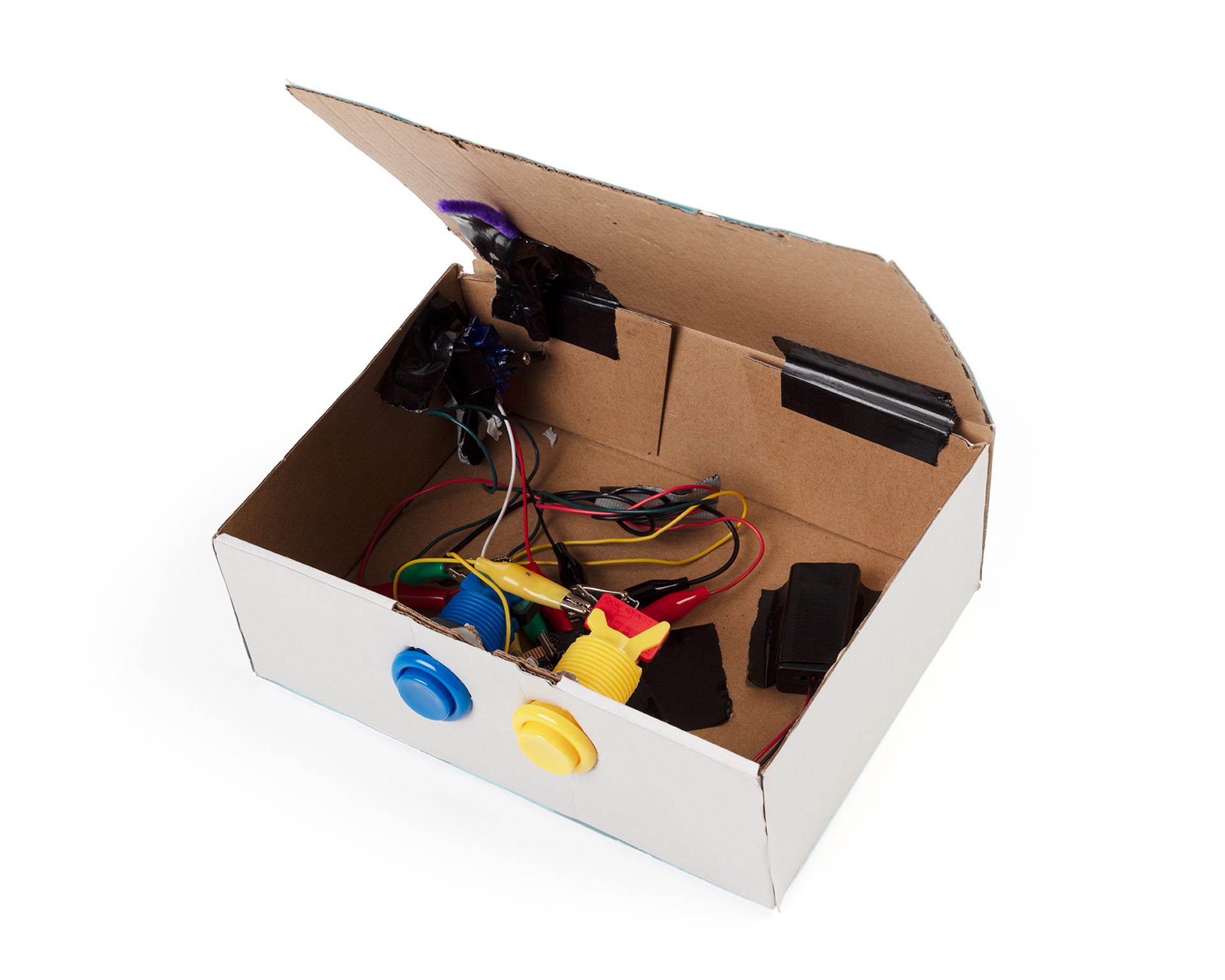
The Bathroom Lock
How might we improve bathroom doors and locks? The device is positioned on the inside of the door. When the buttons are pressed the motor opens or locks the door.
Kingswood High School

Rotating Netball and Basketball Hoop
How might we make the basketball courts a more inclusive area for the people who want to play netball? The netball players don’t get the chance to play at recess and lunch. Our project is a rotating basketball and netball hoop, which allows us to change the court. A button can be operated to rotate the motor under the hoop giving students equal share of the courts so everyone can enjoy and play sports.

Liam
How might we encourage more recycling? We wanted to make a gadget that rewards someone whenever they put a recycling item in the bin. When a bottle is inserted, a micro:bit attached to the flap detects when it is tilted, and the dispenser will then release a lollipop for the user.

Interactive Rubbish Bin
How might we teach young children to put rubbish in the bin? We have gamified the process by adding interactive features. When a button is pushed it uses a motor to open and close the bin and sends a signal to display lighting.

Change room capacity indicator
How might we indicate how many people are in a change room at one time to maximise efficiency? When the user presses the button, it activates the motor to open the door. When the door closes the LED turns red to indicate it is in use. When the door is opened again, the LED changes back to green to indicate the change room is available.
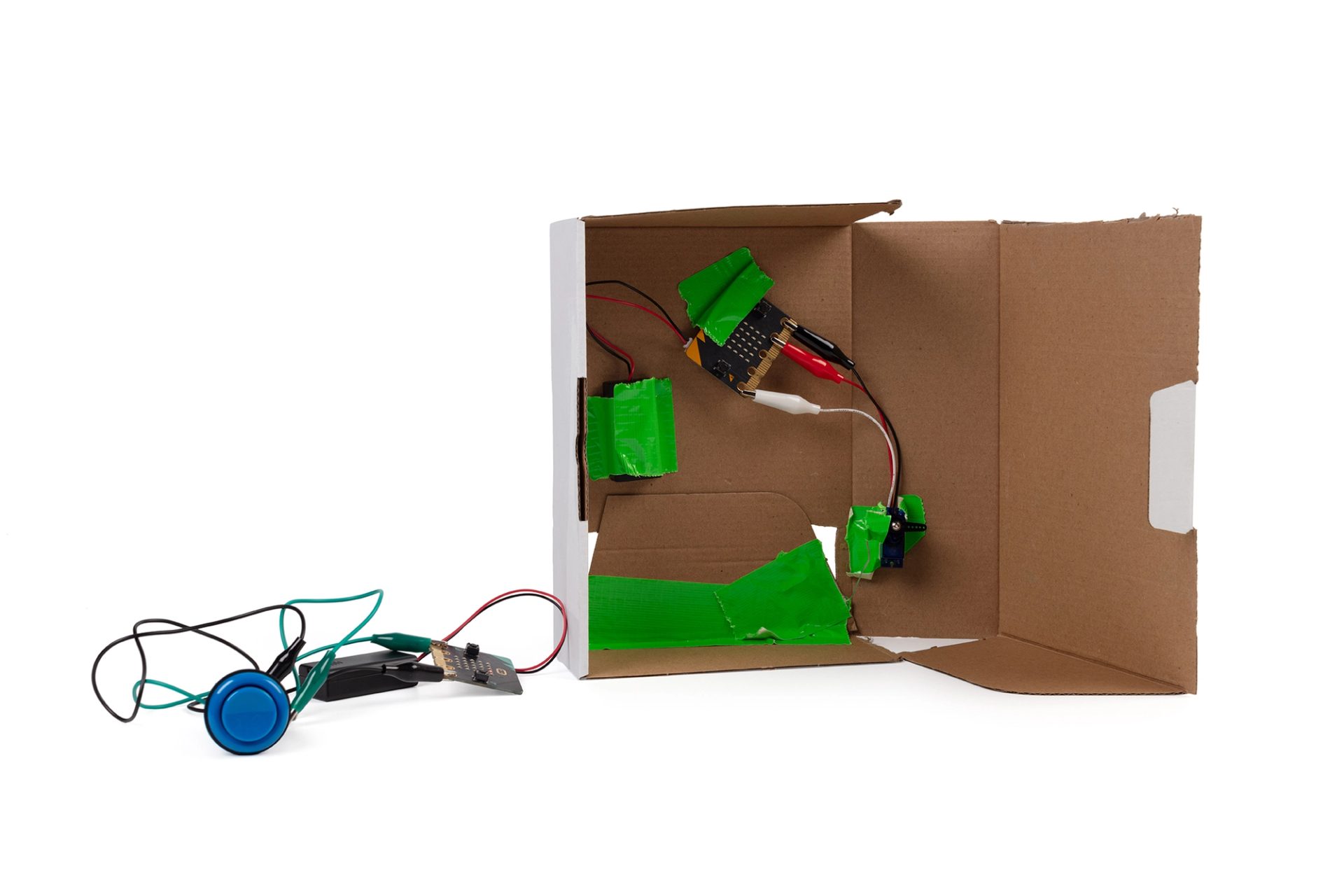
Token Bin
How might we solve the rubbish problem at Kingswood High School?’ This device allows the user to press a button which sends a signal to the motor and opens the bin flap allowing them to insert their rubbish and receive a token.
Merrylands High School
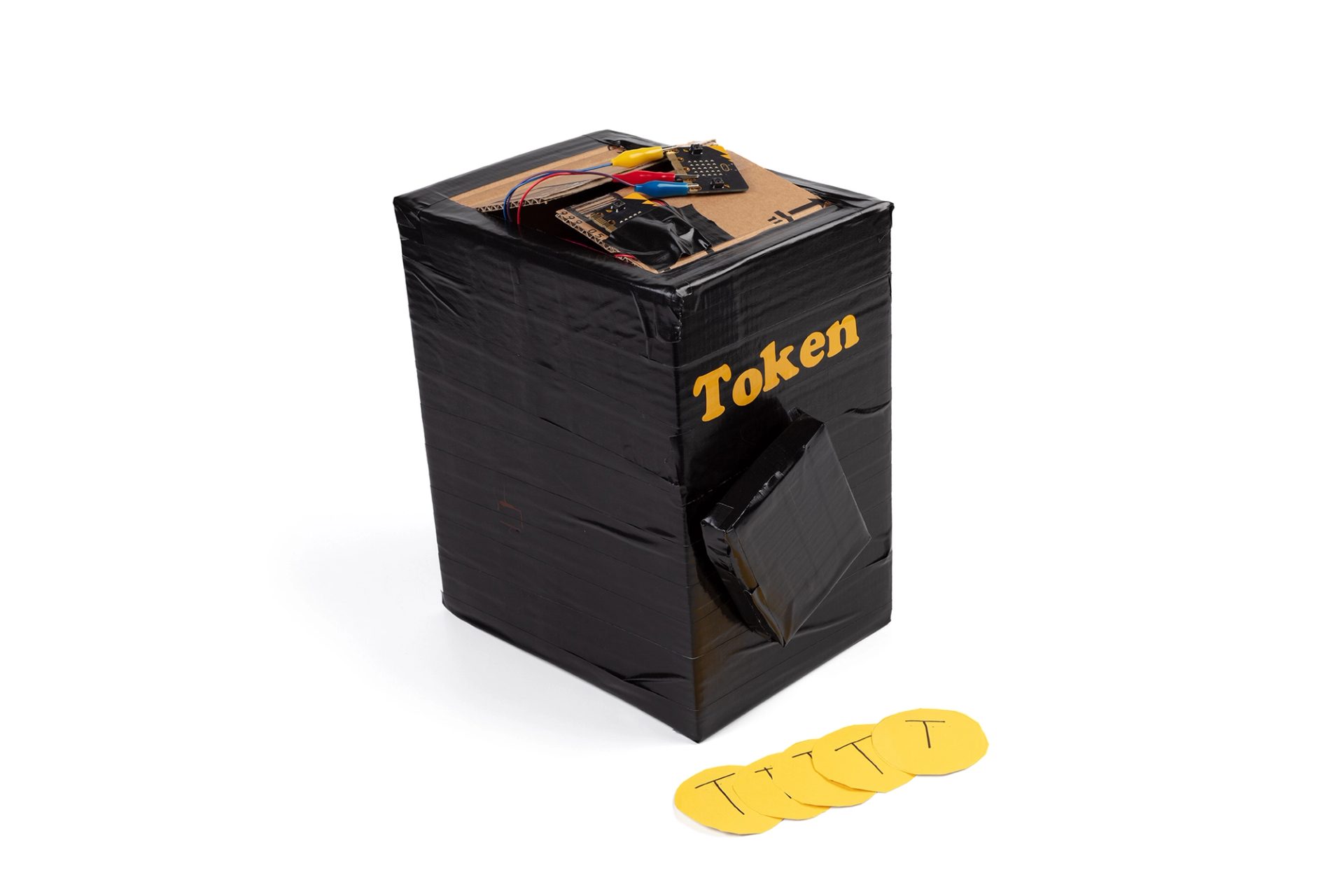
Rubbish Bin Token Machine
How might we encourage students to put their rubbish in the bin? We designed a system that gives you tokens when you put your rubbish in the bin. The tokens can be exchanged for prizes or an excursion. The micro:bit is coded so that when the rubbish flaps are tilted the motor rotates so it can give you tokens.

Danger Button Necklace
How might we make young children safer? The person who is in danger will press button A or B on their necklace, which will send a signal to the micro:bit in the other person's necklace to alert them. Using the onboard buttons and LEDs, the project creates a system to communicate between two users without phones.

Bullying Detector
How might we prevent bullying? Our group created an alarm system which includes an arcade button and two micro:bits. Our device works by clicking the arcade button which sends a signal to the receiver. The button is the input to activate the transmitter. The message gives the person a warning by flashing lights and playing a beep sound.

Advanced Gym Electronic Stamp Card
How might we encourage young people to use fitness facilities to improve their health? Our group created a complex system for a prototype in a gym. This gym has a card tapping system, which in this case is the button. When the card is tapped, it automatically opens the door using the servo motor. Users accrue points with each entry, encouraging them to use the facilities and improve their health.
Plumpton High School
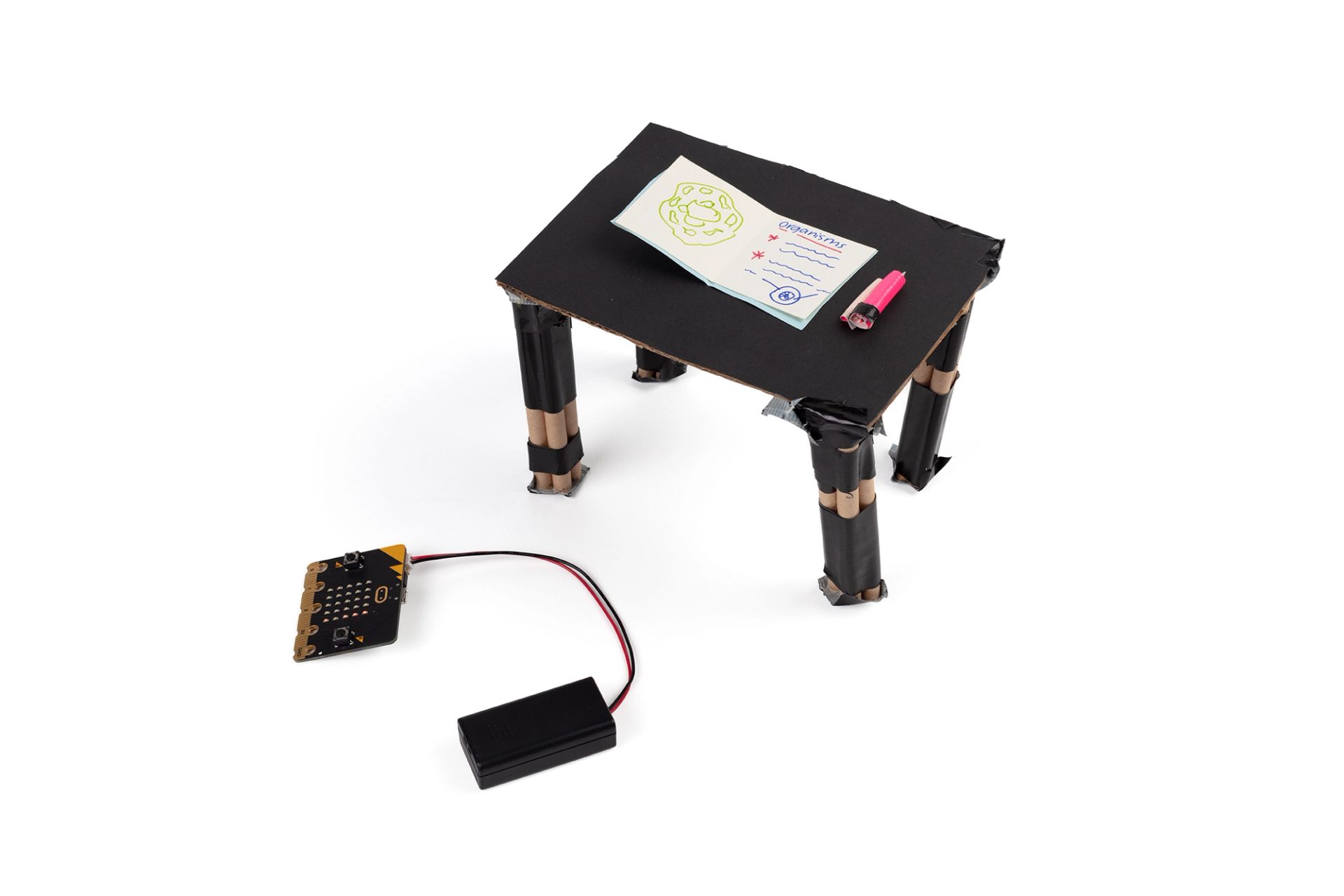
Gum Detector
How might we prevent students from putting gum under classroom desks? Using the light sensor on the micro:bit, this prototype senses when gum is placed under the table and then sends an alert to the teacher, in the form of lights and music, allowing them to maintain a clean learning environment.
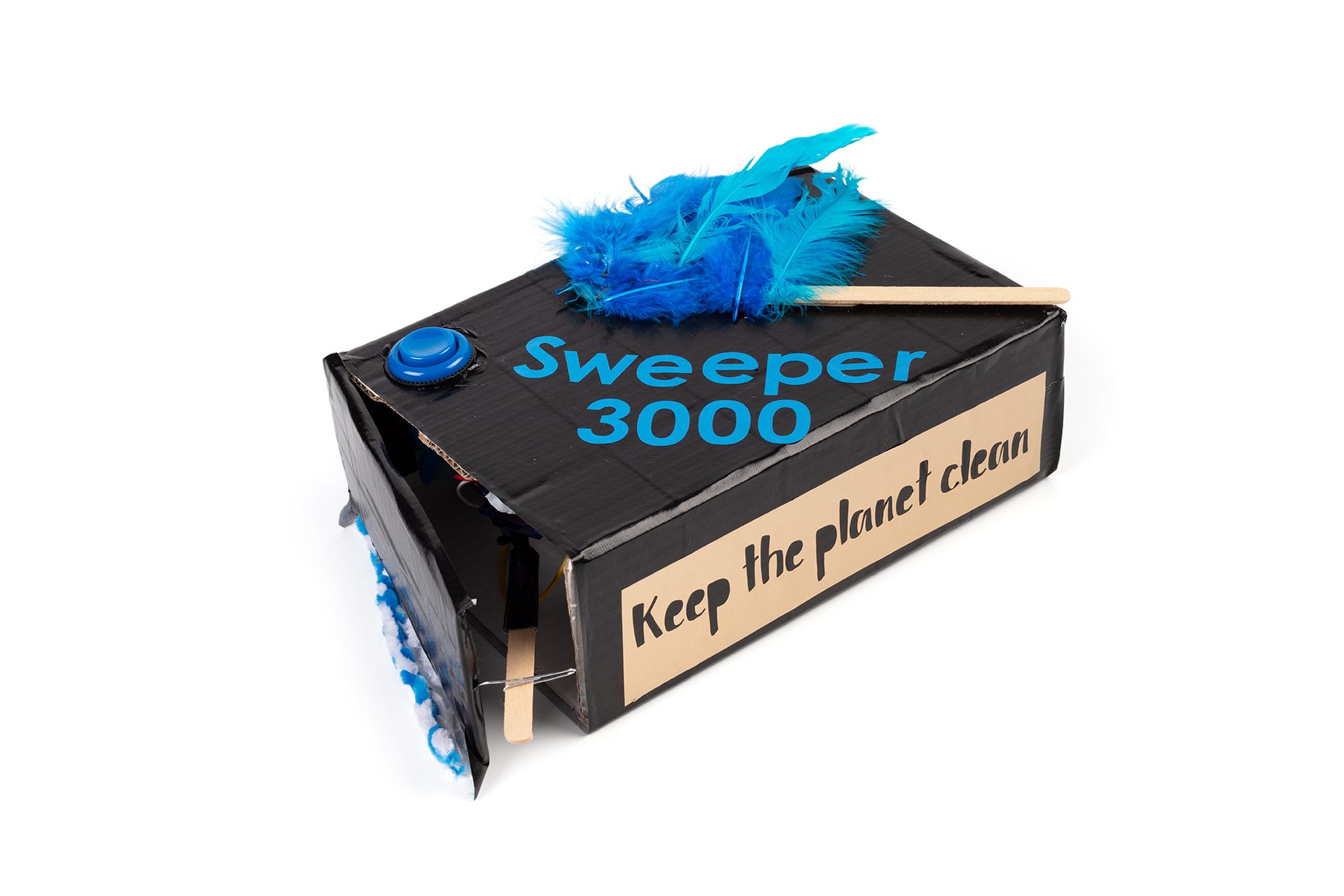
Sweeper 3000
How might we manage the litter in our school’s environment? By pressing the button the motor will rotate to open the flap and the litter will be swept into the box.
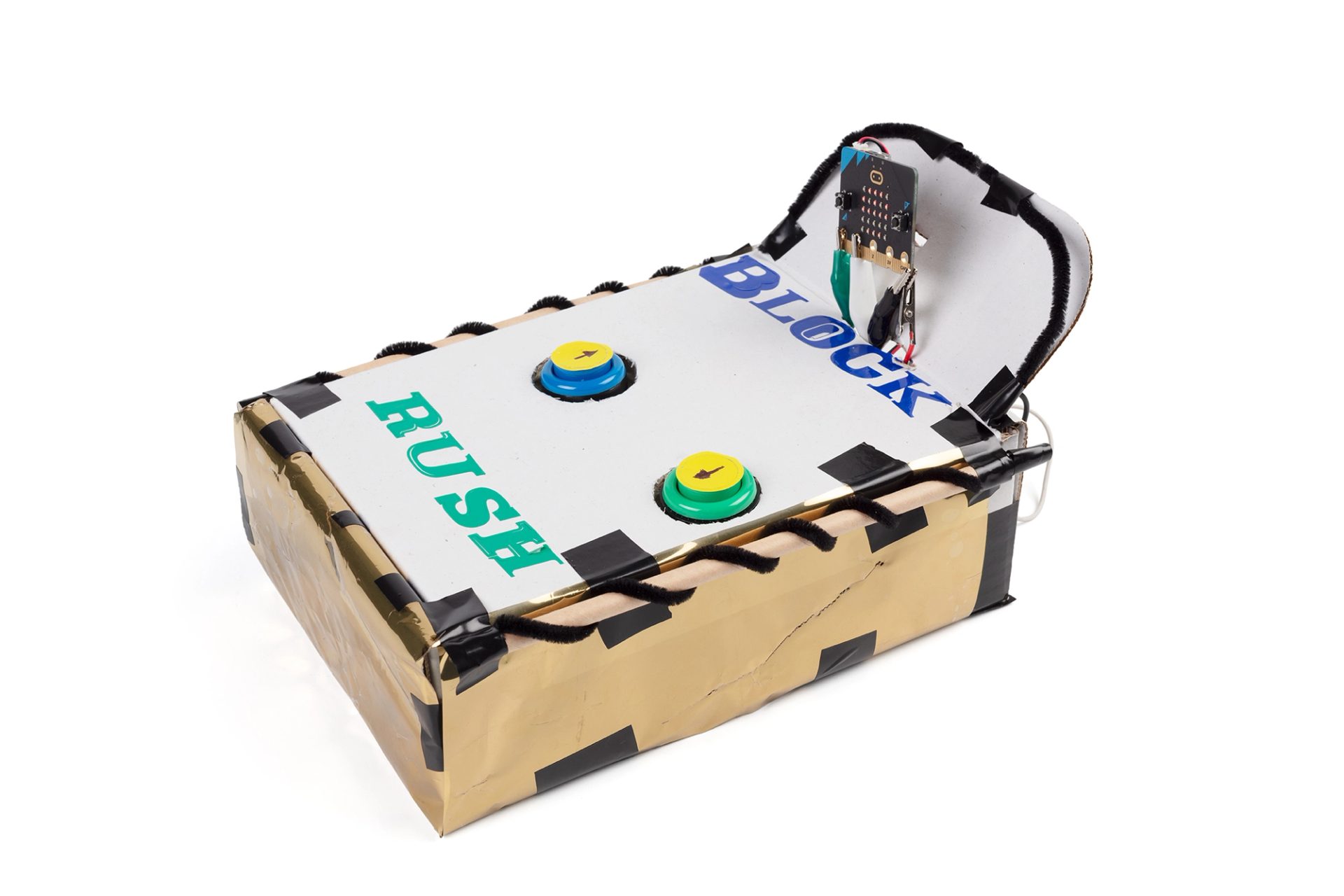
Block Rush
How might we entertain children without modern devices? We have recreated the Google dino game, using the micro:bit buttons and LEDs. You press the up and down buttons to dodge the blocks.
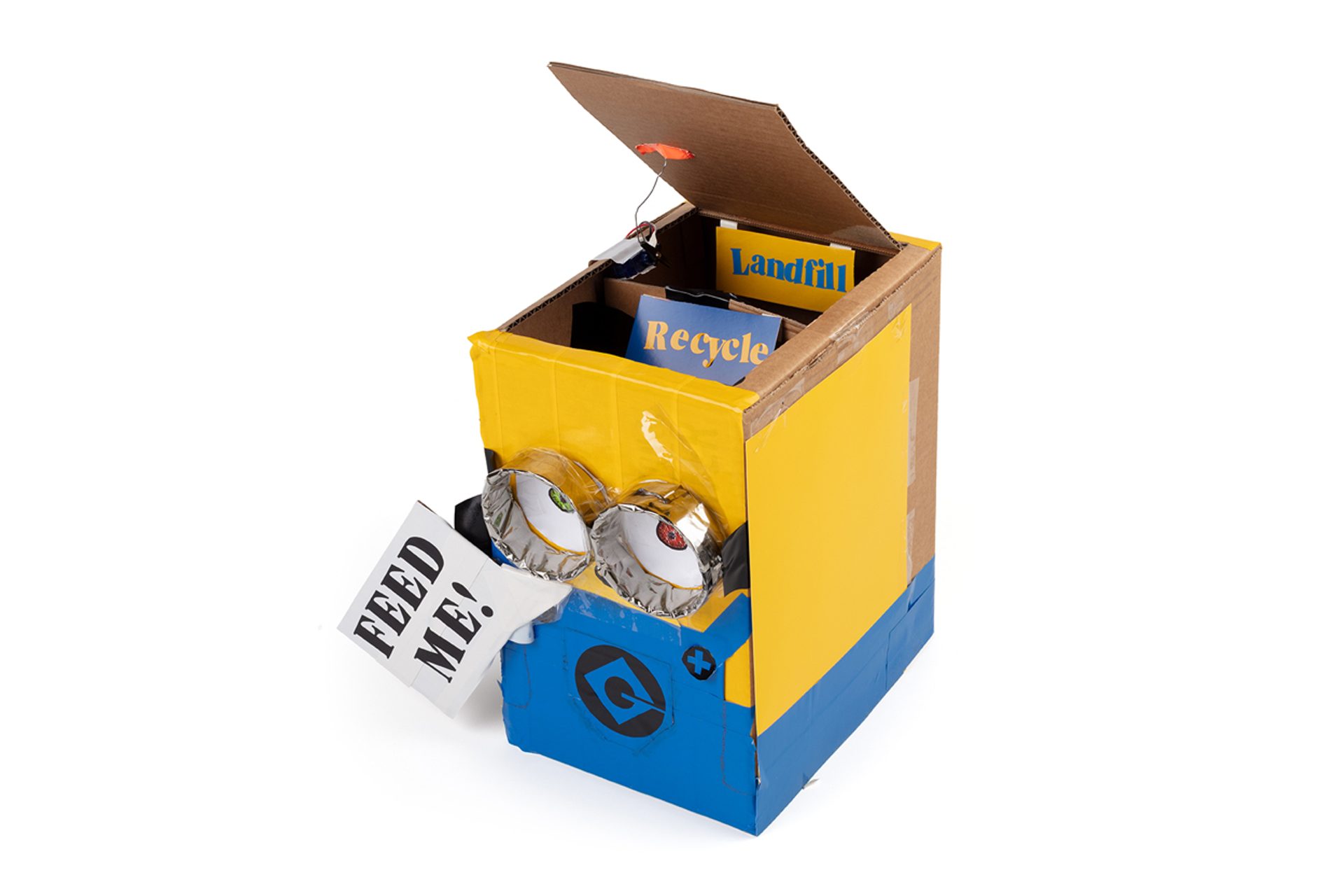
Bob the Cleaner
How might we encourage people to keep the planet cleaner? This project encourages people to recycle and sort their rubbish by making it an interactive experience and making it in the image of a well-loved character. The bin features a motor for hands-free lid opening and two compartments to separate the rubbish.

Secure Door
How might we secure doors more efficiently? Using a button and a motor connected to the micro:bit the user can secure their door by the click of a button.
John Edmundson High School
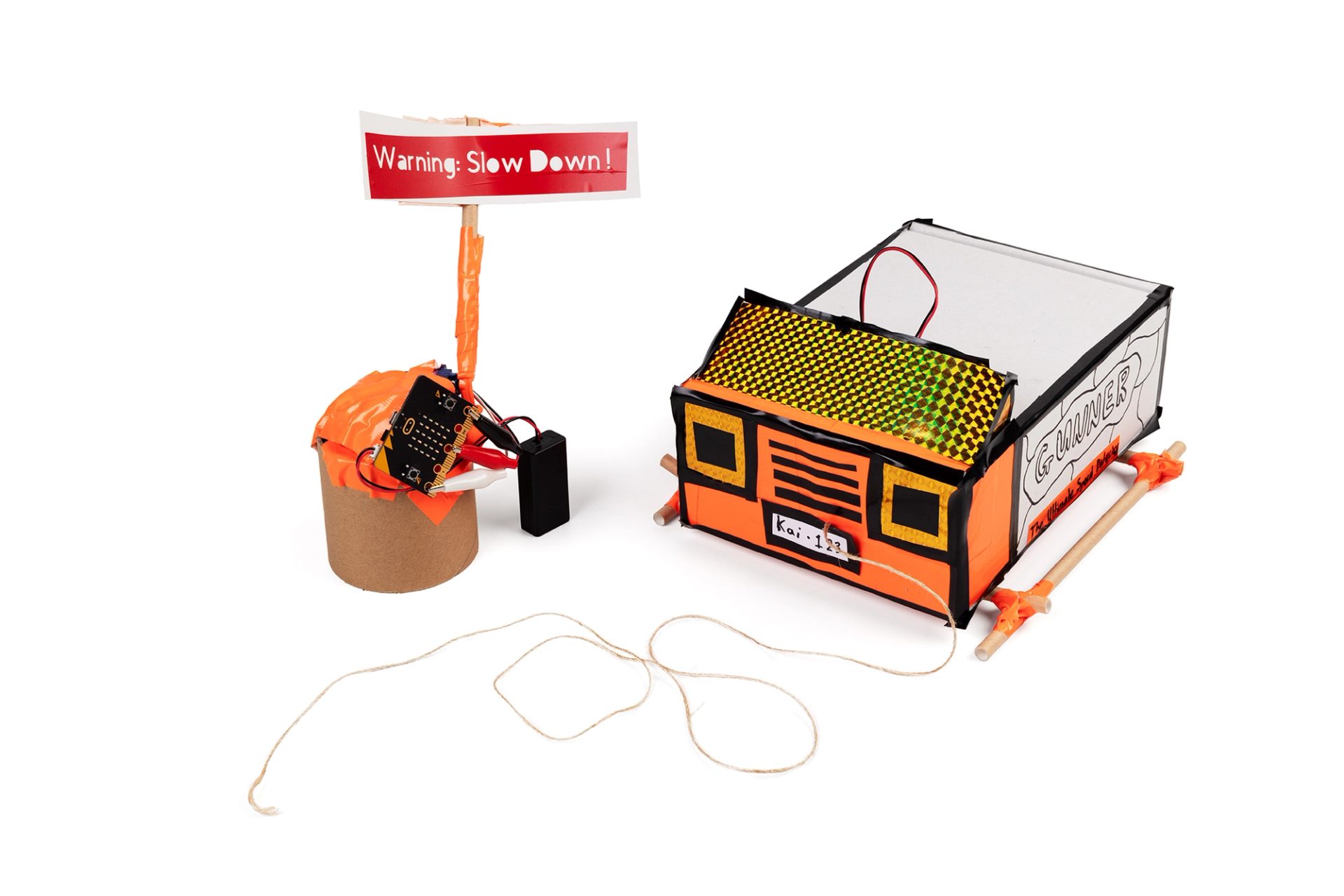
Accelacar
How might we warn drivers when they are driving too fast? Using the accelerometer sensor on the micro:bit, this prototype senses when people drive too fast. The device is attached to the car and when it senses the increase in acceleration above a set amount, it triggers a flashing light and a sign to pop up to warn the driver.
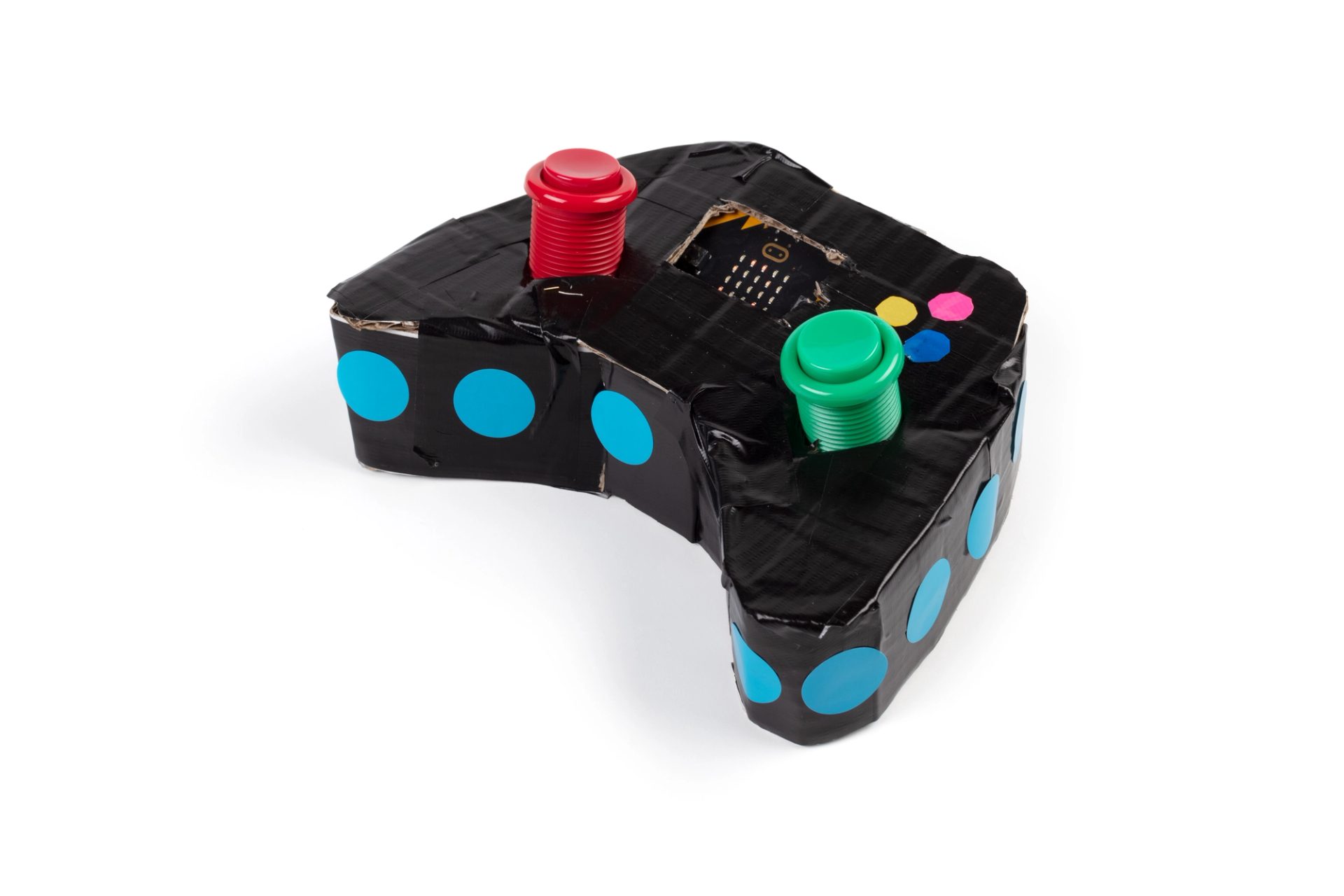
The Bully Buster
How might we reduce peer pressure at school? This project presents questions around peer pressure that scroll across the LEDs on the micro:bit. The two buttons are ‘Yes’ or ‘No’ answers. Depending on your answer you will get an icon showing on the micro:bit to indicate if you are correct or incorrect.
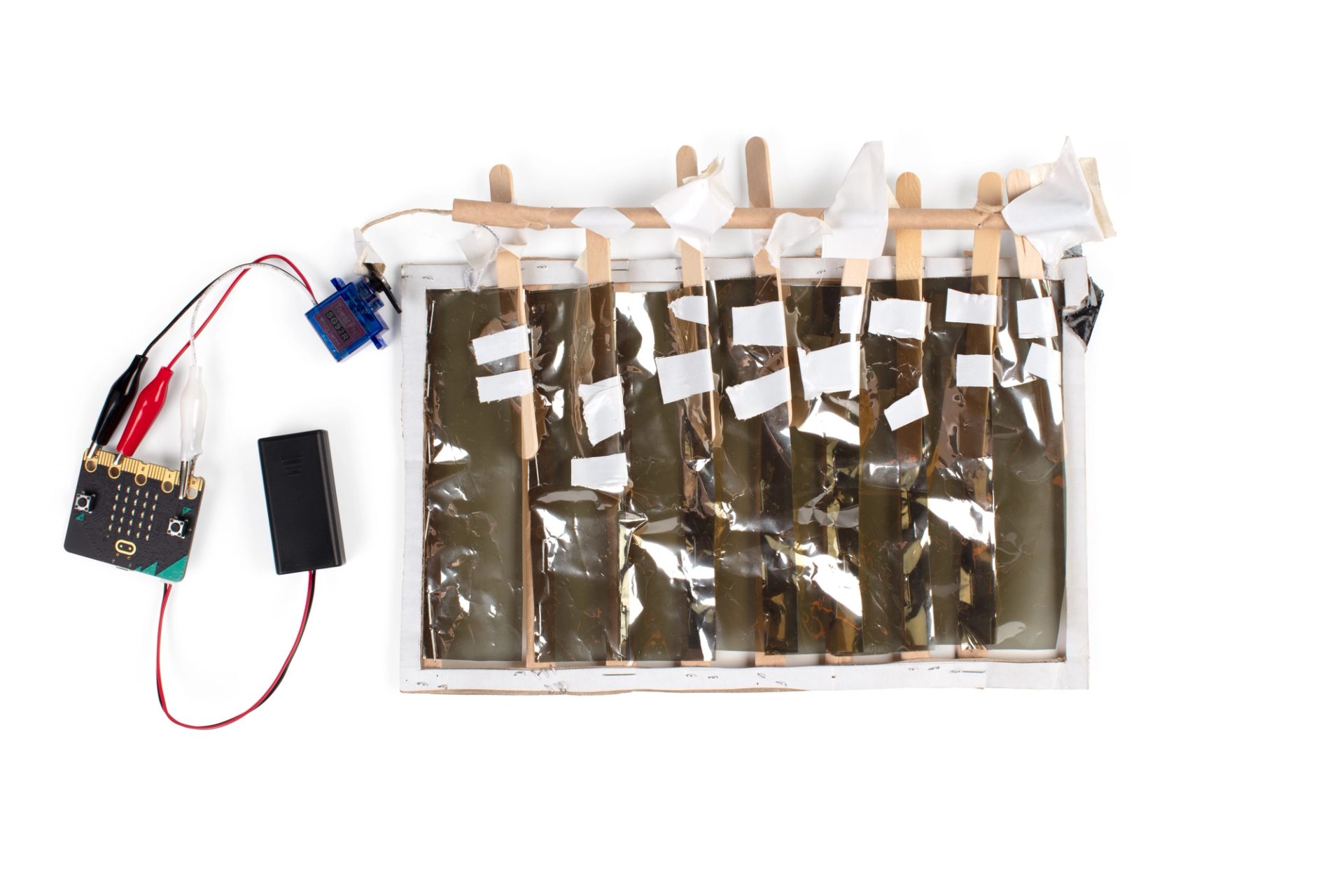
The Sun Shelter
How might we lighten up the quad area, while still providing sun protection? This prototype shows how motorised roof panels and UV-protective transparent materials could lighten up the dark quads. The project uses the micro:bit light sensor to control the roof panels. If the day is dark, the roof panels will open, allowing more light to enter through.

Canteen Ordering System
How might we make canteens more efficient and reduce lines? Simply press the button to choose between the options. A message will be sent to the receiver micro:bit. Your food will be prepared and sent to you.
‘This program was a very fun experience for me and informed me about some valuable skills. I enjoyed every lesson throughout these three weeks although I enjoyed building my final design the most. I am looking forward to engaging with STEAM activities in the future.’’










